An in vitro study on viscosity using an electromagnetically spinning sphere viscometer
September 26, 2016 / Categories: Digital Dentistry, Implant Dentistry

Imai, Atsuko

Baba, Shunsuke

Sakai, Keiji
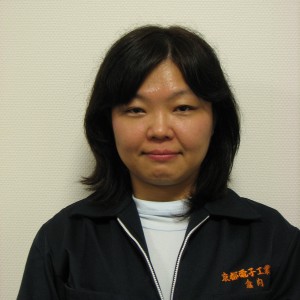
Kurauchi, Nami

Masanori, Yasuda
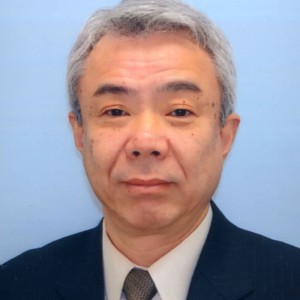
Tanaka, Masahiro
The purpose of this study was to investigate the reproducibility of measurements of salivary viscosity using an electromagnetically spinning (EMS) viscometer.
Introduction
Saliva is mainly secreted by the three major salivary glands: the parotid, submandibular and sublingual glands.
The saliva secreted from all three glands mixes in the oral cavity and exerts physiological functions.
Saliva has important bacteriological, biochemical, and physical e ects on the inside of the mouth, and is relevant to studies in many di erent fields.
In particular, the viscosity of saliva is mainly responsible for the lubricating action that aids in the movement of the tongue and lips. It is also essential for ingestion, swallowing, speech and other functions.1Hershkovich O, Nagler RM. Biochemical analysis of saliva and taste acuity evaluation in patients with burning mouth syndrome, xerostomia and/or gustatory disturbances. → Arch Oral Biol. 2004 Jul;49(7):515–22. Salivary viscosity is correlated with periodontal disease,2Ito F. [The relationship between the viscosity of saliva and the periodontal disease].
→ Nihon Shishubyo Gakkai Kaishi. 1974 Sep;16(2):131–9. Japanese.3Hirotomi T, Yoshihara A, Ogawa H, Ito K, Igarashi A, Miyazaki H. A preliminary study on the relationship between stimulated saliva and periodontal conditions in community-dwelling elderly people.
→ J Dent. 2006 Oct;34(9):692–8. dental caries4Schroeder HE. Saliva viscosity and calculus formation in man.
→ Arch Oral Biol. 1964 Jan-Feb;9(1):65–74.5Animireddy D, Reddy Bekkem VT, Vallala P, Kotha SB, Ankireddy S, Mohammad N. Evaluation of pH, bu ering capacity, viscosity and flow rate levels of saliva in caries-free, minimal caries and nursing caries childre An in vivo study.
→ Contemp Clin Dent. 2014 Jul;5(3):324–8. and xerostomia,6Imura H, Shimada M, Yamazaki Y, Sugimoto K. Characteristic changes of saliva and taste in burning mouth syndrome patients.
→ J Oral Pathol Med. 2016 Mar;45(3):231–6. and plays a role in the maintenance and stability of dentures;7Kawanuma Y. [Saliva viscosity measurement in edentulous patients by original capillary viscometer].
→ Nihon Hotetsu Shika Gakkai Zasshi. 1982 Feb;26(1):71–80. Japanese.8Roberts BJ. A study of the viscosity of saliva at di erent shear rates in dentate and edentulous patients.
→ J Dent. 1977 Dec;5(4):303–9.9Singh RK, Tandan BK, Agrawal NK. The viscosity of saliva as related to the retention of maxillary complete dentures.
→ J Indian Dent Assoc. 1982 Dec;54(12):449–51, 461. therefore, it is an important research topic. Various rotational viscometers and capillary viscometers have been used to measure salivary viscosity, but they are not easy to use and require large amounts of saliva.10Nordbo H, Darwish S, Bhatnagar, RS. Salivary viscosity and lubrification: influence of pH and calcium.
→ Scand J Dent Res. 1984 Aug;92(4):306–14.11Kitamura Y, Sato Y, Kitagawa N, Okane M, Hara S. Basic investigation of evaluation method of rheological characteristics of saliva.
→ Rōnen Shika Igaku. 2006 Sep;21(2):102–10.12Foglio-Bonda A, Pattarino F, Foglio-Bonda PL. Kinematic viscosity of unstimulated whole saliva in healthy young adults.
→ Eur Rev Med Pharmacol Sci. 2014 Oct;18(20):2988–94.13Van der Reijden WA, Veerman EC, Nieuw Amerongen AV. Rheological properties of commercially available polysaccharides with potential use in saliva substitutes.
→ Biorheology. 1994 Nov-Dec;31(6):631–42.14Vissink A, Waterman HA, s-Gravenmade EJ, Panders AK, Vermey A. Rheological properties of saliva substitutes containing mucin, carboxymethylcellulose or polyethylenoxide. → J Oral Pathol. 1984 Feb;13(1):22–8.15Veerman EC, Vakentijn-Benz M, Nieuw Amerongen AV. Viscosity of human salivary mucins: e ect of pH and ionic strength and role of sialic acid.
→ J Biol Buccale. 1989 Dec;17(4):297–306.16Rantonen PJ, Meurman JH. Viscosity of whole saliva.
→ Acta Odontol Scand. 1998 Aug;56(4):210–4.17Park MS, Chung JW, Kim YK, Chung SC, Kho HS. Viscosity and wettability of animal mucin solutions and human saliva.
→ Oral Dis. 2007 Mar;13(2):181–6.
The electromagnetically spinning (EMS) viscometer, developed by Sakai et al. in 2008,18Sakai K, Hirano T, Hosoda M. Electromagneti- cally spinning sphere viscometer.
→ Appl Phys Express. 2010 Jan;3(1):016602.uses a minute metal sphere of approximately 2 mm in diameter submerged in a sealed sample and subjected to electromagnetic induction, which is a remote operation that applies rotational torque. In this new system, the viscoelasticity of a substance is assessed by a camera that records the rotational movement of this sphere. This method uses disposable tubes and spheres, preventing the possibility of infection. The use of this device might make the chairside measurement of salivary viscosity simple.
To the best of our knowledge, no report has examined the reproducibility of this device. The aim of the present study was to evaluate the reproducibility of measurements of salivary viscosity using an EMS viscometer.
Materials and methods
An EMS viscometer (Kyoto Electronics Manufacturing, Kyoto, Japan) was used to measure viscosity (Fig. 1a-d). An amount of 300 μL of a viscosity standard fluid (Showa Essential Oils, Tokyo, Japan) was poured into the test tube, the sphere submerged, and the test tube covered with a sealed cap and inserted into the device. The thermostatic bath in the device was set to 36 °C and a rotational speed of 1,000 rpm. Once the temperature of the viscosity standard fluid had stabilized, measurements were taken. All measurements were repeated five times at 30 min intervals within the same day using the same set of tubes, spheres and viscosity standard fluid.
We prepared five di erent sets of test tubes, spheres and viscosity reference solutions. A 300 μL aliquot of viscosity reference solution was added to the device, and five measurements were taken after the temperature of the solution had stabilized. This procedure was then repeated using various amounts of viscosity standard fluid (300 μL, 500 μL, 750 μL and 1,000 μL) placed into di erent test tubes with di erent spheres, and these spheres were then inserted into the device. Measurements were repeated five times within the same day.
- Fig. 1a
- Fig. 1b
- Fig. 1c
- Fig. 1d
Fig. 1a-d
(a) Electromagnetically spinning sphere viscometer.
(b) A glass tube.
(c) An aluminum sphere.
(d) A schematic of the measurement method.
Reproducibility with a low-viscosity solution, Saliveht
A solution of 100% Saliveht (Teijin,Osaka,Japan) was used as test. The thermostatic bath inside the device was set at 36 °C and the rotational speed was set at 1,000 rpm.
The Saliveht (300 μL) was placed into a test tube and the sphere was immersed in the solution. The tube was then capped with a sealing cap and inserted into the device. Once the temperature inside the device had stabilized, the measurements were repeated five times every 30 min using the same sample, the same test tube and the same sphere on the same day.
The procedure was then repeated using different five sets of tubes, spheres and Saliveht (300 μL), and the measurements were repeated five times within the same day. This procedure was then repeated using various amounts of Saliveht (300 μL, 500 μL, 750 μL and 1,000 μL) placed into di erent test tubes with di erent spheres, and these spheres were then inserted into the device.
Statistical analysis
The mean and standard deviation were calculated for the data obtained.
Results
Using the same viscosity standard fluid, test tube and sphere, the results of the five repeated measurements within the same day showed mean and standard deviation values of 20.04 mPa s (SD ± 0.04) (Fig. 2). When di erent disposable test tubes and spheres were used, the calculated mean and standard deviation values were 20.14 mPa s (SD ± 0.04) (Fig. 3). These values were similar to the previous ones. The measurements of the viscosity using di erent amounts of fluid showed no di erences between the five samples. The calculated mean and standard deviation values were 20.12 mPa s (SD ± 0.06) (Fig. 4).
- Fig. 2
- Fig. 3
- Fig. 4
- Fig. 5
- Fig. 6
- Fig. 7
Reproducibility with Saliveht
The five measurements taken on the same day with the same tube and sphere using Saliveht separated by a 30 min interval were quite similar and yielded mean and standard deviation values of 4.02 mPa s (SD ± 0.06) (Fig. 5). Using di erent test tubes, spheres and Saliveht to obtain five measurements on the same day resulted in mean and standard deviation values of 4.26 mPa s (SD ± 0.08), with no di erences between the five measurements (Fig. 6). Using di erent amounts of the test solution resulted in mean and standard deviation values of 4.04 mPa s (SD ± 0.08), and no di erences were noted with di erent amounts of solution (Fig. 7).
Fig. 2
Viscometer reproducibility using a viscosity standard fluid.
Fig. 3
The measurements using di erent disposable test tubes and spheres with the viscosity standard fluid.
Fig. 4
The measurements using di erent amounts of viscosity standard fluid.
Fig. 5
Viscometer reproducibility using Saliveht.
Fig. 6
The measurements using di erent disposable test tubes, spheres and Saliveht.
Fig. 7
The measurements using di erent amounts of Saliveht.
Discussion
Saliva aids in maintaining healthy dentition throughout one’s life and is important for oral health. Saliva contributes to numerous functions in the oral cavity, such as speech and swallowing of foods, maintenance of oral health, protection of the mucosa from bacterial attack and fungal growth, prevention of demineralization of the teeth and lubrication of the oral cavity. Salivary viscosity is associated with the amount of mucin; both these factors are also associated with the degree of periodontal disease and clinical symptoms.19Ito F. [The relationship between the viscosity of saliva and the periodontal disease].
→ Nihon Shishubyo Gakkai Kaishi. 1974 Sep;16(2):131–9. Japanese. The physical properties of saliva, including flow, pH, bu ering capacity, and viscosity, have been found to be associated with caries activity in children and to act as markers of caries.20Animireddy D, Reddy Bekkem VT, Vallala P, Kotha SB, Ankireddy S, Mohammad N. Evaluation of pH, bu ering capacity, viscosity and flow rate levels of saliva in caries-free, minimal caries and nursing caries childre An in vivo study.
→ Contemp Clin Dent. 2014 Jul;5(3):324–8. Xerostomia patients are known to have low salivary flow and high viscosity compared with healthy individuals.21Imura H, Shimada M, Yamazaki Y, Sugimoto K. Characteristic changes of saliva and taste in burning mouth syndrome patients.
→ J Oral Pathol Med. 2016 Mar;45(3):231–6. For the maintenance of a complete denture, the physical properties of saliva between the base of the denture and the mucosa under the base are considered important, and thus there are many studies on the viscosity of saliva and maintenance of dentures.22Kawanuma Y. [Saliva viscosity measurement in edentulous patients by original capillary viscometer].
→ Nihon Hotetsu Shika Gakkai Zasshi. 1982 Feb;26(1):71–80. Japanese. Determining the amount and condition of saliva at the chairside with ease is important for improvement of oral function and the intra-oral environment, eating and swallowing support, and increased quality of life.
Viscosity has previously been measured using capillary flow methods or rotational viscometry.23Park MS, Chung JW, Kim YK, Chung SC, Kho HS. Viscosity and wettability of animal mucin solutions and human saliva.
→ Oral Dis. 2007 Mar;13(2):181–6. Capillary flow methods are simple to operate,require a short measurement time and are accurate. However, when the viscosity of a non-Newtonian fluid is measured, only the mean value is obtained, because the shear rate varies, depending on the location within the viscometer.24Nordbo H, Darwish S, Bhatnagar, RS. Salivary viscosity and lubrification: influence of pH and calcium.
→ Scand J Dent Res. 1984 Aug;92(4):306–14.25Kitamura Y, Sato Y, Kitagawa N, Okane M, Hara S. Basic investigation of evaluation method of rheological characteristics of saliva.
→ Rōnen Shika Igaku. 2006 Sep;21(2):102–10.26Foglio-Bonda A, Pattarino F, Foglio-Bonda PL. Kinematic viscosity of unstimulated whole saliva in healthy young adults.
→ Eur Rev Med Pharmacol Sci. 2014 Oct;18(20):2988–94. Generally, in rotational viscometry, a constant, that is the shear rate, allows for a constant, uniform flow in all locations in the viscometer. This can be used to measure the viscosity of non-Newtonian fluids; however, the equipment is complicated and measurement requires 20–30 min. Furthermore, it has inferior precision compared with capillary methods, and it is not suitable for low-viscosity fluids.27Park MS, Chung JW, Kim YK, Chung SC, Kho HS. Viscosity and wettability of animal mucin solutions and human saliva.
→ Oral Dis. 2007 Mar;13(2):181–6.28Rantonen PJ, Meurman JH. Viscosity of whole saliva.
→ Acta Odontol Scand. 1998 Aug;56(4):210–4. A large amount of saliva is needed, and intake saliva needs to be filtered, eliminating large polymers and making it di icult to reflect the exact properties of saliva. Procedures such as equipment cleaning are complex and time-consuming, and the equipment is costly. In addition, with a conventional viscometer, a low torque is generated, making it di icult to measure a low-viscosity sample.
A cone-plate viscometer can analyze small samples (2–3 mL). However, it is not suitable for measuring samples with low viscosity, such as saliva. When analyzing low viscosity samples, such as water, the torque generated is too small, making stable detection di icult.Salivary viscosity is not uniform between the measurement methods and devices. In addition, even with the same measurement device, the viscosity is strongly influenced by the measurement conditions, such as temperature and shear rate. Researchers have shown ingenuity and creativity in measuring viscosity. The device that we used is contactless, sealed and rapid, requires samples of low volume and uses disposable components; these features are absent in a conventional viscometer. The equipment is not contaminated by the sample, and all of the containers are disposable. The disposability of the cell unit, which is di icult with conventional methods, is a major advantage of this method. Therefore, it is no longer necessary to expend e ort in cleaning after measurement, which is normally a tedious task. This method is superior for measuring salivary viscosity because torque is applied to the rotor without any contact, which has the potential to spread infection and is a major concern with conventional methods. The EMS viscometer enables continuous measurement over a wide range, from 1 to 50,000 mPa s, enabling stable measurement, even in low-viscosity samples such as water. Another feature of this device is the ability to measure both Newtonian fluids and non-Newtonian fluids. Since viscosity is dependent on temperature, a temperature-sensing system was built into the device used, enabling automatic measurement of the temperature dependence of viscosity.29Sakai K, Hirano T, Hosoda M. Electromagneti- cally spinning sphere viscometer.
→ Appl Phys Express. 2010 Jan;3(1):016602.30Yasuda M, Kurauchi N, Hara M, Nakamura M, Hosoda T, Hirano T, Sakai K. Rapid measurement of ultrahigh viscosity using an electro-magnetically spinning system.
→ Jpn J Appl Phys. 2014 Jul;53(7 Suppl):07KC01.31Fukunaga K, Onuki M, Ohtsuka Y, Hirano T, Sakai K, Ohgoe Y, Katoh A, Yaguchi T, Funakubo A, Fukui Y. Blood viscometer applying electromagnetically spinning method.
→ J Artif Organs. 2013 Sep;16(3):359–67.Once the test tube has been inserted into the device, the sample is measured in 10 s, and therefore the method has been simplified. Although the reproducibility of EMS viscometers has been described, the reproducibility has not been studied in terms of whether they are suitable for bio-instrumentation. Therefore, first, we used a viscosity standard fluid, which was a Newtonian fluid, to study the reproducibility of the equipment. Low-concentration solutions are reportedly di icult to measure using a viscometer. Saliva is a low-viscosity polymer solution and a non-Newtonian fluid, making viscosity measurement di icult.
A standard viscosity fluid is intended to calibrate the viscometer and exhibit constant viscosity. Because the aim of this study was to measure saliva, the machine settings were adjusted so that the temperature of the thermostatic bath would be 36 °C, which is close to body temperature. The rotational speed was set to 1,000 rpm because the measurements involved low viscosity. When the standard viscosity solution was used, the viscometer showed high accuracy and very high repeat accuracy. Very high reproducibility too was observed when investigating whether reproducibility is a ected by di erent disposable tubes and spheres. In addition, results from the investigation in which the test material was changed showed very high reproducibility.
Furthermore, the study of saliva at low viscosities is important.15 Saliva is a ected by both time and temperature, and the e ect is not consistent. Therefore, commercially available artificial saliva, which has stable properties and known components and additives, was used. The artificial saliva is packaged in an aerosol spray and is easy to use. Its e icacy and stability have been established and it is clinically useful. The main component is the same inorganic electrolyte solution as saliva, to which a thickening agent is added. Its pH, specific gravity and other properties are also similar to those of saliva, and the salivary viscosity was adjusted to 4~6 mm2/s at 25 °C.
Investigation of the low-viscosity solution also showed that the viscometer had high accuracy and very high repeat accuracy. Very high reproducibility too was evident when investigating whether disposable tubes and spheres a ect reproducibility. In addition, the investigation in which the test material was changed also showed very high reproducibility. These findings suggest that a measurement method using an EMS viscometer, has the potential to easily assess changes in the properties of saliva, primarily viscosity, in small samples.
Conclusion
This study aimed to assess the measurement of viscosity using the newly developed EMS viscometer, which demonstrated high reproducibility, thereby indicating that simple methods for assessing saliva can be developed.
Competing interests
The authors declare that they have no competing interests.
Why did you conduct the research reported on in this paper?
For what reasons could others cite your paper?
How could your study’s findings have an impact on dentistry?
What is the relevance of your study’s findings to the daily practice of a dentist?
What are your recommendations for further investigation of the topic of your article?
References
| 1. | ↑ | Hershkovich O, Nagler RM. Biochemical analysis of saliva and taste acuity evaluation in patients with burning mouth syndrome, xerostomia and/or gustatory disturbances. → Arch Oral Biol. 2004 Jul;49(7):515–22. |
| 2, 19. | ↑ | Ito F. [The relationship between the viscosity of saliva and the periodontal disease]. → Nihon Shishubyo Gakkai Kaishi. 1974 Sep;16(2):131–9. Japanese. |
| 3. | ↑ | Hirotomi T, Yoshihara A, Ogawa H, Ito K, Igarashi A, Miyazaki H. A preliminary study on the relationship between stimulated saliva and periodontal conditions in community-dwelling elderly people. → J Dent. 2006 Oct;34(9):692–8. |
| 4. | ↑ | Schroeder HE. Saliva viscosity and calculus formation in man. → Arch Oral Biol. 1964 Jan-Feb;9(1):65–74. |
| 5, 20. | ↑ | Animireddy D, Reddy Bekkem VT, Vallala P, Kotha SB, Ankireddy S, Mohammad N. Evaluation of pH, bu ering capacity, viscosity and flow rate levels of saliva in caries-free, minimal caries and nursing caries childre An in vivo study. → Contemp Clin Dent. 2014 Jul;5(3):324–8. |
| 6, 21. | ↑ | Imura H, Shimada M, Yamazaki Y, Sugimoto K. Characteristic changes of saliva and taste in burning mouth syndrome patients. → J Oral Pathol Med. 2016 Mar;45(3):231–6. |
| 7, 22. | ↑ | Kawanuma Y. [Saliva viscosity measurement in edentulous patients by original capillary viscometer]. → Nihon Hotetsu Shika Gakkai Zasshi. 1982 Feb;26(1):71–80. Japanese. |
| 8. | ↑ | Roberts BJ. A study of the viscosity of saliva at di erent shear rates in dentate and edentulous patients. → J Dent. 1977 Dec;5(4):303–9. |
| 9. | ↑ | Singh RK, Tandan BK, Agrawal NK. The viscosity of saliva as related to the retention of maxillary complete dentures. → J Indian Dent Assoc. 1982 Dec;54(12):449–51, 461. |
| 10, 24. | ↑ | Nordbo H, Darwish S, Bhatnagar, RS. Salivary viscosity and lubrification: influence of pH and calcium. → Scand J Dent Res. 1984 Aug;92(4):306–14. |
| 11, 25. | ↑ | Kitamura Y, Sato Y, Kitagawa N, Okane M, Hara S. Basic investigation of evaluation method of rheological characteristics of saliva. → Rōnen Shika Igaku. 2006 Sep;21(2):102–10. |
| 12, 26. | ↑ | Foglio-Bonda A, Pattarino F, Foglio-Bonda PL. Kinematic viscosity of unstimulated whole saliva in healthy young adults. → Eur Rev Med Pharmacol Sci. 2014 Oct;18(20):2988–94. |
| 13. | ↑ | Van der Reijden WA, Veerman EC, Nieuw Amerongen AV. Rheological properties of commercially available polysaccharides with potential use in saliva substitutes. → Biorheology. 1994 Nov-Dec;31(6):631–42. |
| 14. | ↑ | Vissink A, Waterman HA, s-Gravenmade EJ, Panders AK, Vermey A. Rheological properties of saliva substitutes containing mucin, carboxymethylcellulose or polyethylenoxide. → J Oral Pathol. 1984 Feb;13(1):22–8. |
| 15. | ↑ | Veerman EC, Vakentijn-Benz M, Nieuw Amerongen AV. Viscosity of human salivary mucins: e ect of pH and ionic strength and role of sialic acid. → J Biol Buccale. 1989 Dec;17(4):297–306. |
| 16, 28. | ↑ | Rantonen PJ, Meurman JH. Viscosity of whole saliva. → Acta Odontol Scand. 1998 Aug;56(4):210–4. |
| 17, 23, 27. | ↑ | Park MS, Chung JW, Kim YK, Chung SC, Kho HS. Viscosity and wettability of animal mucin solutions and human saliva. → Oral Dis. 2007 Mar;13(2):181–6. |
| 18, 29. | ↑ | Sakai K, Hirano T, Hosoda M. Electromagneti- cally spinning sphere viscometer. → Appl Phys Express. 2010 Jan;3(1):016602. |
| 30. | ↑ | Yasuda M, Kurauchi N, Hara M, Nakamura M, Hosoda T, Hirano T, Sakai K. Rapid measurement of ultrahigh viscosity using an electro-magnetically spinning system. → Jpn J Appl Phys. 2014 Jul;53(7 Suppl):07KC01. |
| 31. | ↑ | Fukunaga K, Onuki M, Ohtsuka Y, Hirano T, Sakai K, Ohgoe Y, Katoh A, Yaguchi T, Funakubo A, Fukui Y. Blood viscometer applying electromagnetically spinning method. → J Artif Organs. 2013 Sep;16(3):359–67. |

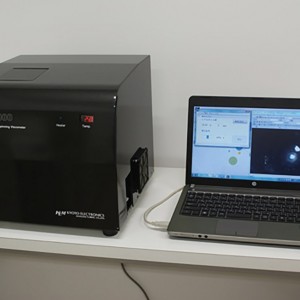
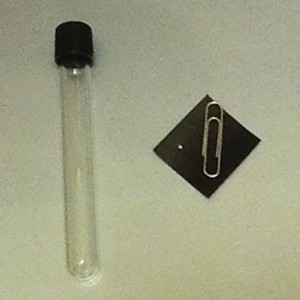
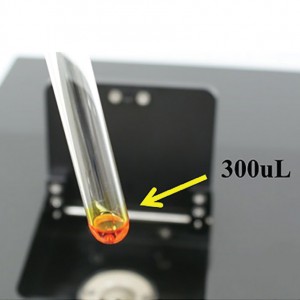
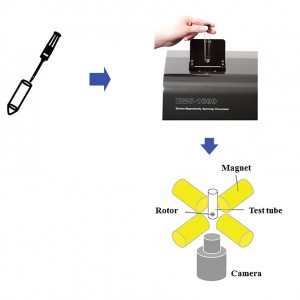

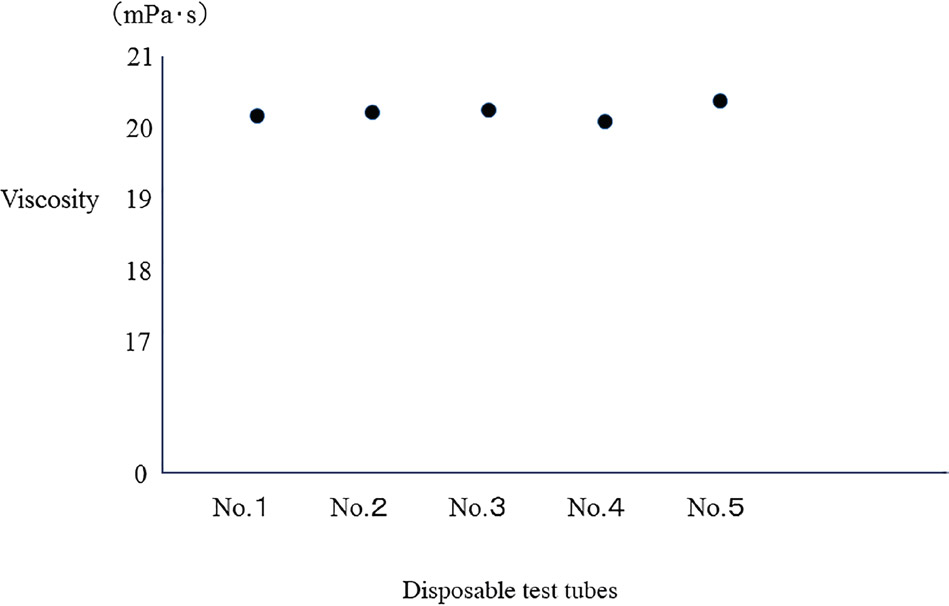
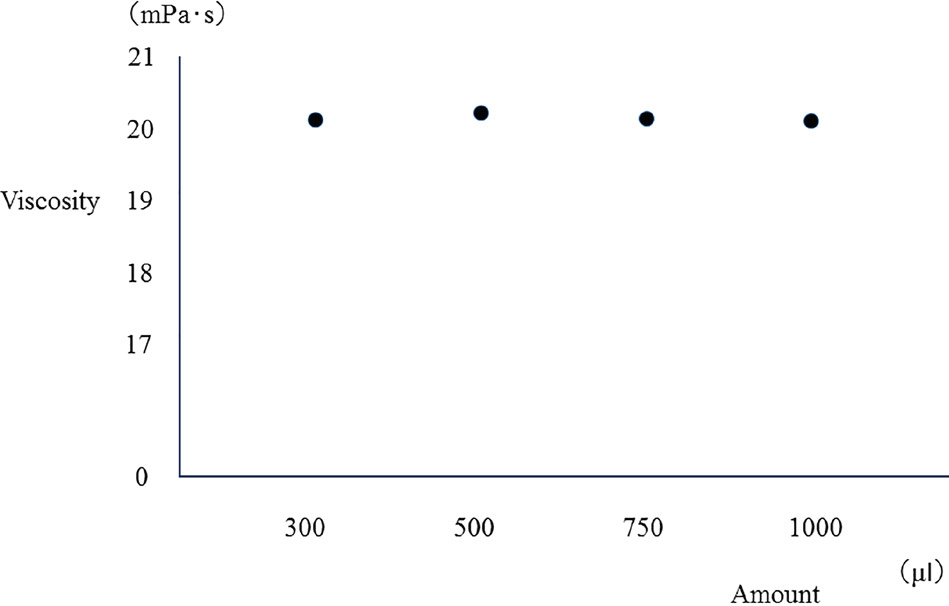
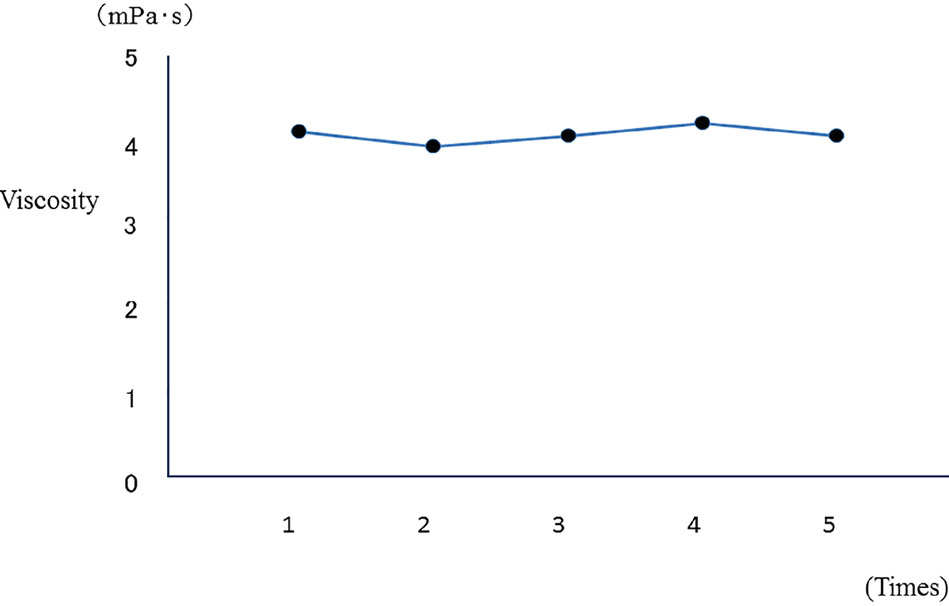
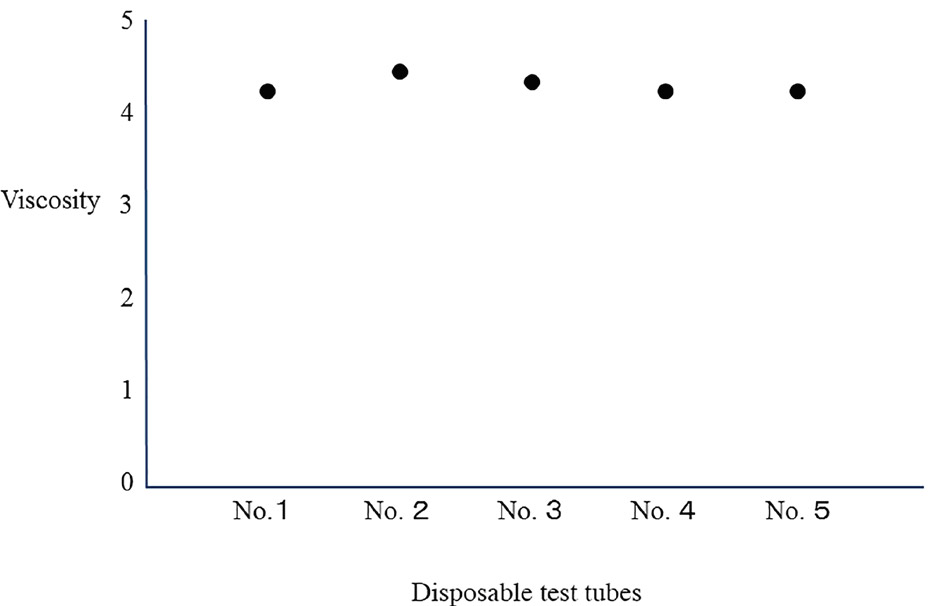
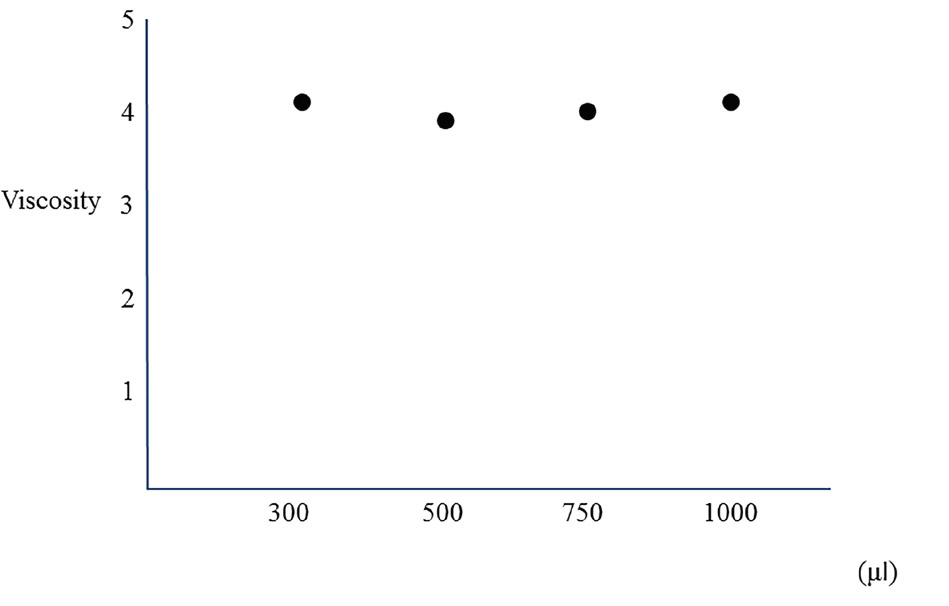





Leave a Reply
Be the First to Comment!